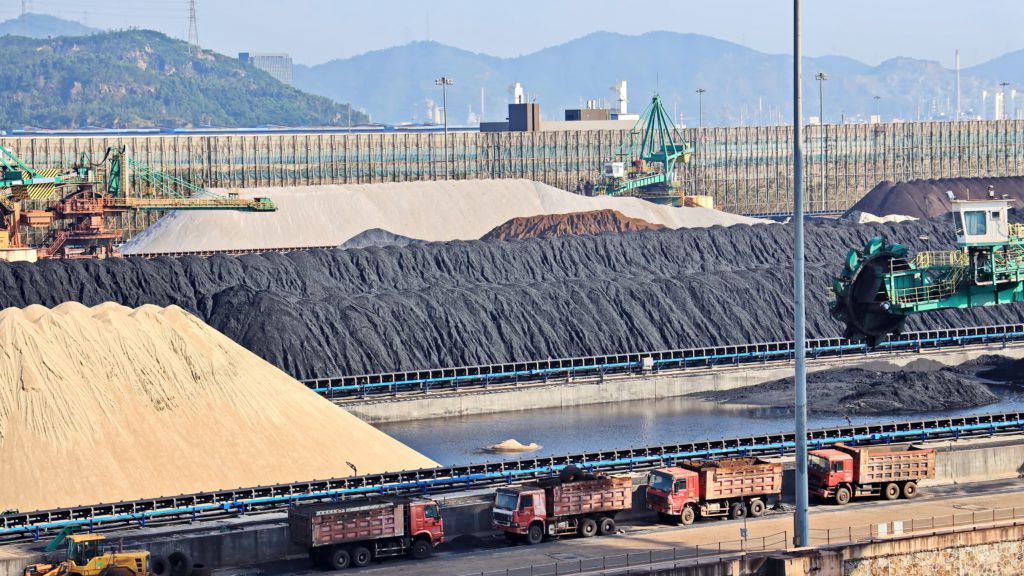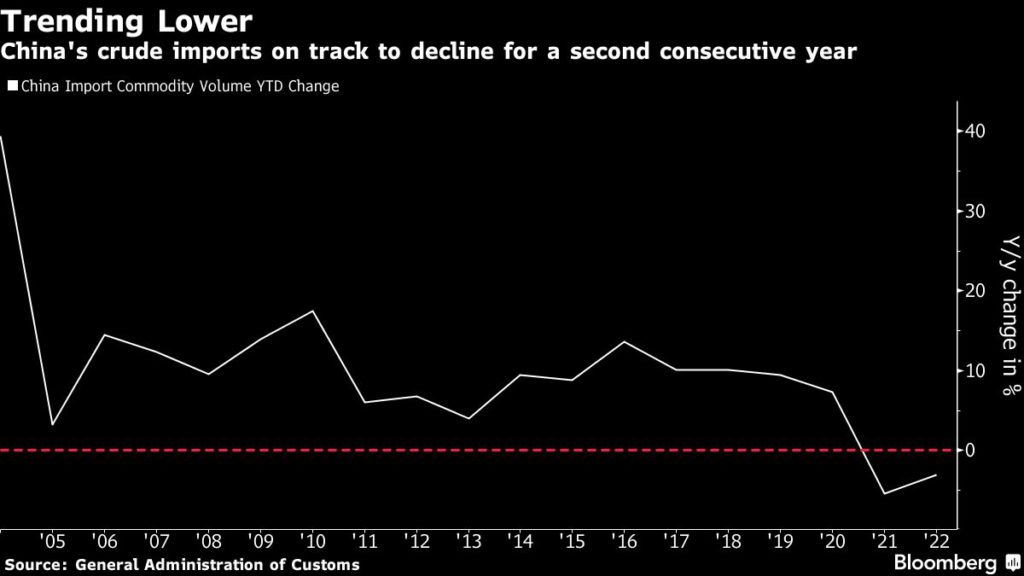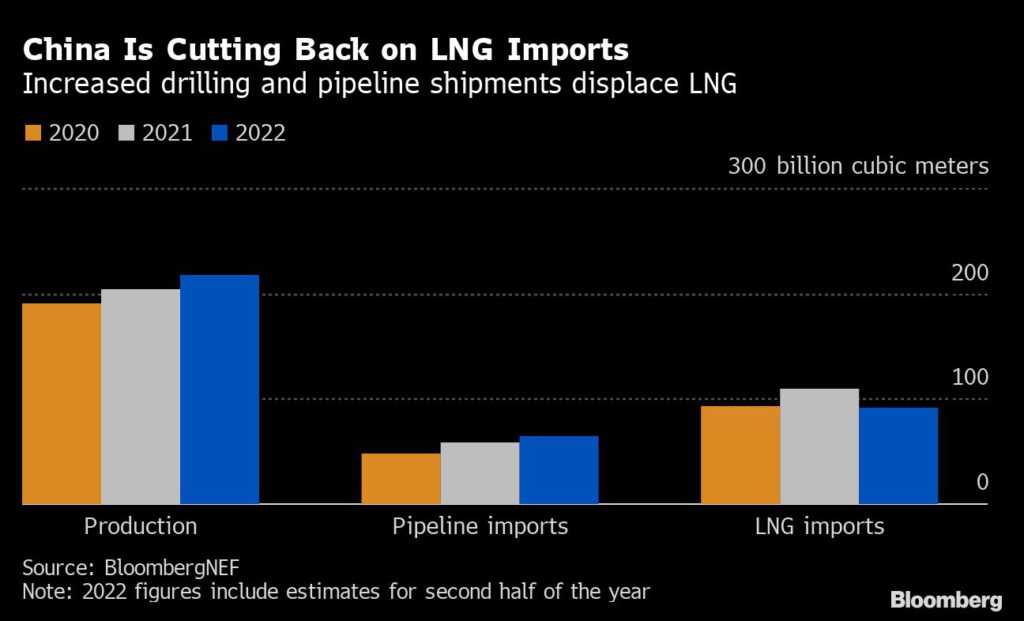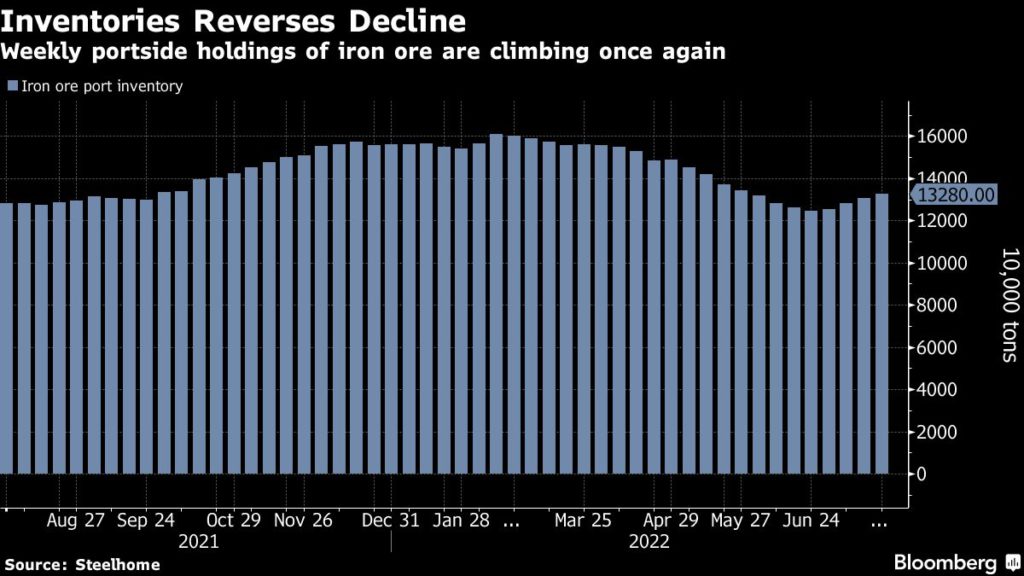China’s hunger for commodities is wavering after years of growth

China’s imports of key commodities face some mighty headwinds in the second half, which could spell trouble for the producers around the globe that rely on its economic engine to power demand for their energy, food, and materials.
Rapid growth in Asia’s top economy has usually been enough to push imports higher each year, creating a dependable backstop for world consumption and even conjuring the last super-cycle in demand that peaked about a decade ago. But that growth is slowing, due to injuries to the economy that are arguably self-inflicted by government policy, as well as worsening global conditions.
Energy imports, in particular, plunged in June, capping a weak first half that may foreshadow a rare annual decline in purchases across many commodities. Crude oil, gas, coal, palm oil, and iron ore all look vulnerable to quite steep drops in demand. Copper shipments are one of the few areas to buck the trend in the first six months.
Beijing is trying to engineer a recovery that should help revive commodities consumption. But it’s unlikely to be enough to fully offset the mounting threats from stringent virus-related curbs on activity, a deepening crisis in the property sector, surging energy prices due to the war in Ukraine, and the possibility that the world economy is barreling toward a recession.
Crude oil
The Chinese economy is likely to expand by just 3.9% in 2022, according to Bloomberg’s latest survey, below the government’s 5.5% target and last year’s growth of 8.1%. It’s a grim omen for commodities demand that “may test oil’s staying power above $100 a barrel,” Bloomberg Intelligence analyst Henik Fung said in a note.

China’s crude imports depend heavily on travel and transportation activity, and will probably decline for a second year in a row as refiners cut back on purchases while the country is still threatened by virus-related shutdowns. Stockpiles remain high, and elevated international prices are putting off buyers, so any kind of recovery will probably have to wait until the fourth quarter. Prior to 2021, China’s imports hadn’t fallen since at least 2005.
Gas & Coal
China is looking at an unprecedented decline in imports of natural gas, the cleaner-burning fuel touted as the replacement for coal on the road to net-zero emissions. BloombergNEF analyst Daniela Li expects a 5.5% drop to 158 billion cubic meters, due mainly to less demand for seaborne cargoes of liquefied natural gas, which could fall by as much as 15%.

There are manifold reasons for LNG’s fall from favor, according to a note from Wood Mackenzie Ltd. They include a subdued economy, rising international prices, government support for clean coal, a warmer-than-usual winter, and growth in the use of renewable energy. Higher domestic gas production and more supply from pipelines have also reduced inbound shipments.
An almost certain drop in coal buying for the first time since 2015 is more straightforward. China has ramped up domestic mining to record levels and imposed price caps that make imports unprofitable, after last year’s crippling power shortages and the spike in prices caused by Russia’s invasion of Ukraine. Imports will drop by 22% to 250 million tons this year, according to the China Coal Transportation and Distribution Association.
Iron & copper
Iron ore imports through June are running about 4% behind last year’s pace, having fallen in 2021 after the government ordered steel mills to shrink output from record levels in a bid to restrain carbon emissions. Another cut has been mandated for 2022.
China’s vast steel industry, meanwhile, is in a funk, warning of crisis conditions due to poor demand and plunging profits. Although Beijing is likely to require more of the alloy as it turns to infrastructure spending to revive the economy, those projects have long lead times. All the while, demand from an even more critical sector — the property market — has worsened as mortgage holders withhold payments on unfinished housing.
Factor in China’s policy of trying to reduce its reliance on foreign suppliers by raising domestic output of the mineral, and the move to produce cleaner steel from scrap, and iron ore imports will probably drop for a second year, according to Bloomberg Intelligence.

Copper, and copper ore, are a bright spot among imports, and shipments of both continue to run ahead of last year. China’s haul of unwrought copper in June was the highest in 2022. Given its usage in construction, that’s seemingly at odds with the weakness in iron ore, according to a note from Capital Economics, although one explanation is that traders were “taking advantage of the arbitrage opportunity between Shanghai and London copper prices.”
In any case, the onshore market remains bearish, according to recent comments from executives, with rising imports and higher domestic production likely to keep prices under pressure for the time being.
(With assistance from Sarah Chen, Kathy Chen, Yuling Yang, Dan Murtaugh, Liz Ng and Winnie Zhu)
Related Article: Goldman warns China’s property crisis will sink iron ore price
More News
{{ commodity.name }}
{{ post.title }}
{{ post.date }}

Comments